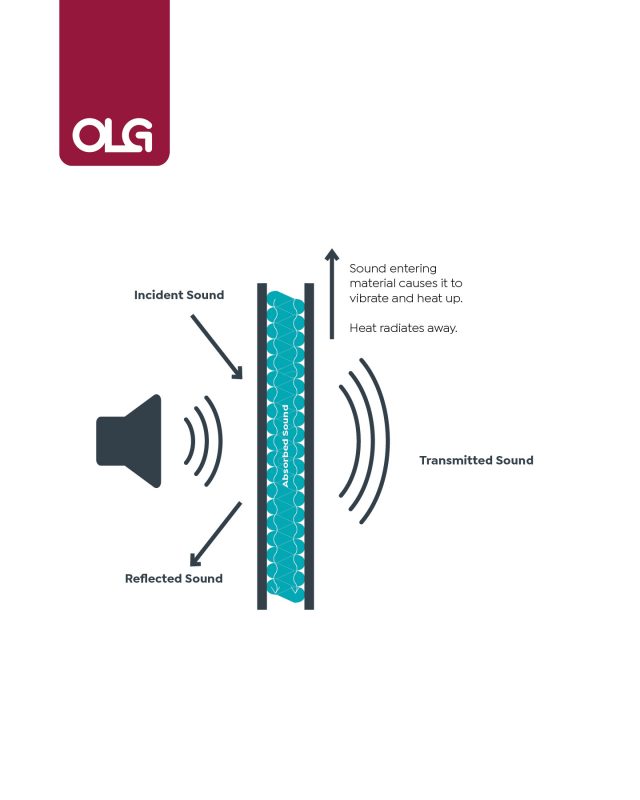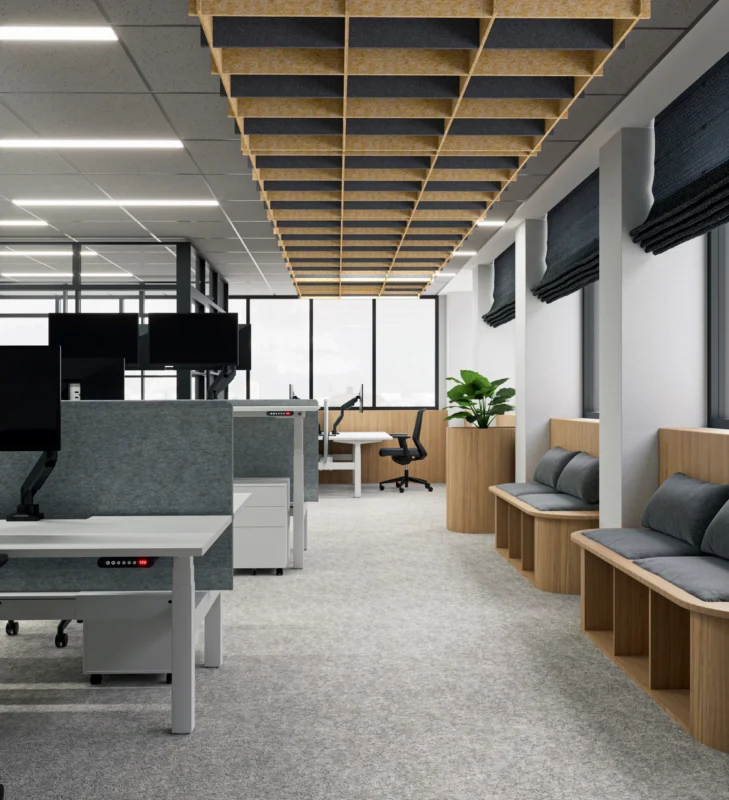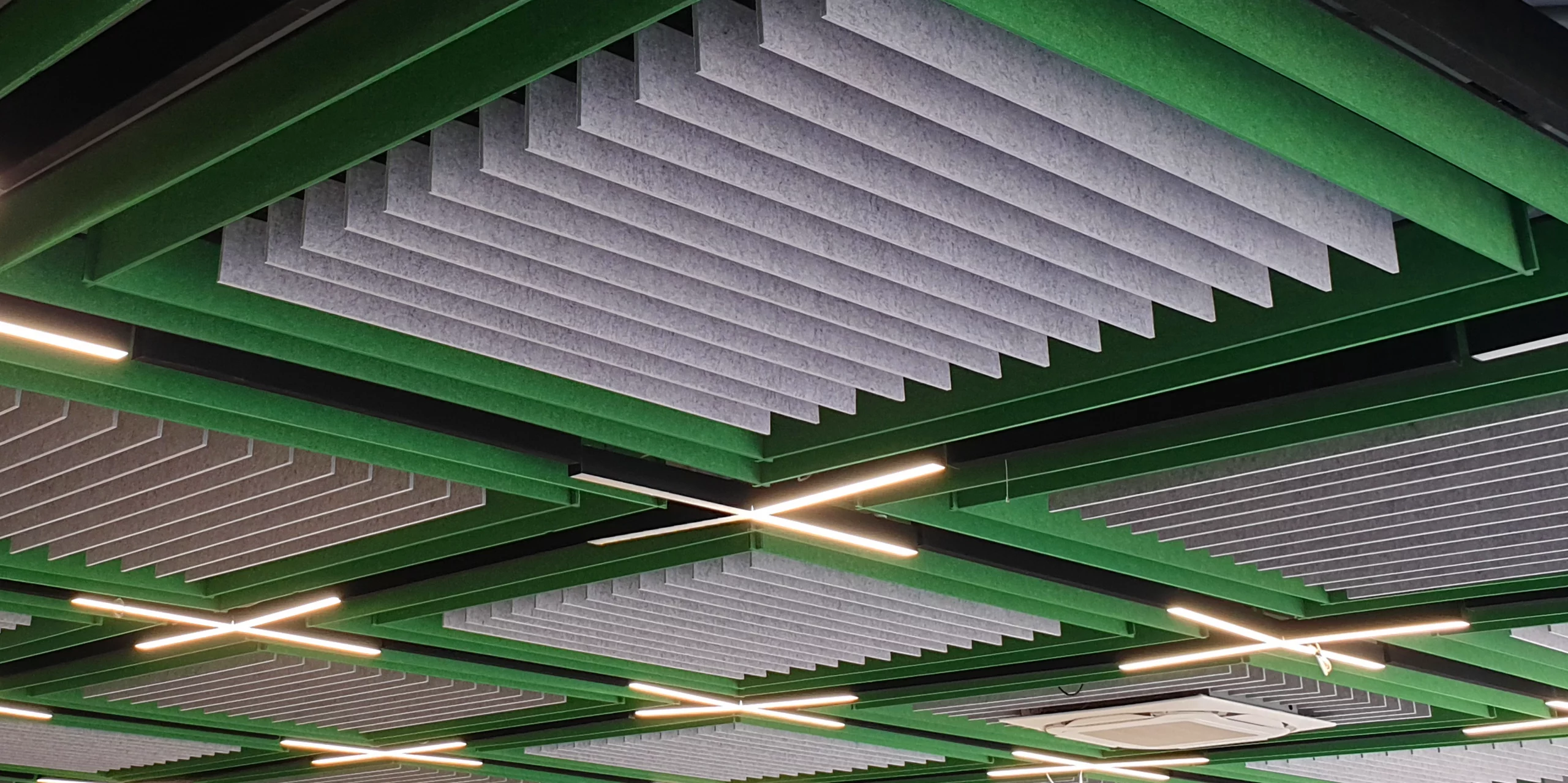What do you call those giant, beehive structures that hang from the ceilings of high-end offices? The answer might baffle you. They’re called ceiling baffles, and no, they aren’t the evolution of wooden dinosaur kits we built as kids. Ceiling baffles are an engineering marvel that combines a stylish aesthetic with an intimate understanding of acoustics in open spaces. They might look unassuming, or even purely decorative, but placed overhead in a busy lunchroom, and you can definitely hear the difference.
It might seem like magic, but in this article, we’ll look behind the curtain and explain how sound baffles work. We’ll also discuss how this innovative product can be used to transform your office space, both in terms of sound control and style aesthetic. Let’s delve into the mechanics of these sound-absorbing marvels and explore how they work their magic.
The Symphony of Sound Absorption
Soundwaves are complex things. So much so, that we created an entire article just to explain the science behind how soundwaves behave.
Essentially, when soundwaves strike an acoustic barrier, up to three scenarios is possible. Some sound is reflected, some is absorbed and converted into heat while the remainder is transmitted through the material.
The properties of the acoustic barrier will affect how much sound is reflected, absorbed or transmitted. Fibrous materials with loose, air-filled materials like foam, wool, and fiberglass are better at absorbing soundwaves. Conversely, dense materials tend to reflect more of the sound.
Irregular surfaces help to scatter sound waves randomly in a process known as “diffusion”. As diffused soundwaves spread over a wide area, they lose energy quickly, reducing the volume of reflected sound. This diffuse scattering of soundwaves helps to prevent the buildup of audio hotspots in corners or hallways.
When it comes to acoustically treating any space, the idea is to use materials that both absorb sound and diffuse reflected sound to reduce the overall ambient volume.


Baffles: Not as Confusing as They Sound
Baffles, by definition, are a device that acts to reduce the flow of something through a space. You can have fluid baffles for water flow, baffles for various gas systems as well as sound baffles in acoustic treatment.
Acoustic baffles, such as the ones offered by the Acoustiq brand, are specially designed panels crafted to both absorb and diffuse sound in large spaces, particularly those with high ceilings. Suspended from the ceiling, these panels can be arranged to appear like modern art pieces while also functioning as acoustic wonders.
The secret to their effectiveness lies in their construction, strategic placement and understanding how soundwaves interact with different surfaces.
Ceiling Baffle Materials
Like most acoustic panelling, ceiling baffles are generally made from recycled plastic, mineral wool, fibreglass, cellulose, open cell foam, or combination of many of these.
These fibrous materials are effective sound absorbers, converting a portion of all received soundwaves into heat which quickly dissipates throughout the substrate.
Ceiling Baffle Placement
Large spaces with towering ceilings often grapple with acoustic difficulties due to the reflective nature of materials like steel decking, glass or concrete. These materials possess low absorption coefficients, resulting in sound waves bouncing around, creating unwanted echoes and reverberations.
A suspended ceiling baffle works by intercepting soundwaves both from direct sources and after they have reflected off the ceiling. Sound waves that bounce off the ceiling and on to the top of the baffle do so repeatedly, losing energy after each reflection.
The irregular surface of the baffle also helps to diffuse soundwaves that enter the complex arrangement of acoustic material.
Well-placed ceiling baffles create a noticeably hushed environment both under and around them.
AcoustiQ Ceiling Baffles – Quiet & Stylish
Acoustiq ceiling baffles not only provide effective acoustic treatment for the office and large open areas, but also add colour and aesthetic to the space.
More than just an audio privacy accessory, ceiling baffles can be a powerful artistic statement or a dramatic conversation starter.
Harmonising Spaces with AcoustiQ Panelling
Pairing ceiling baffles with various other AcoustiQ panelling can orchestrate an even more profound acoustic transformation. The most efficient acoustic treatments involve a variety of irregular surfaces, sound-absorbing materials and clever placement. However, before embarking on an acoustic makeover journey, it’s crucial to make sure you are up to speed with fire safety regulations. Acoustic baffles should be installed to comply with fire code regulations and requirements
There are many ways to soundproof the office, but AcoustiQ represents some of the best and most stylish options on the market. From improving acoustic quality and speech intelligibility to enhancing visual aesthetics, these panels are becoming an indispensable tool in the modern quest for peaceful, focused, and collaborative spaces.
